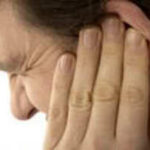More than 100 years after its discovery, the gastrointestinal infection Whipple’s disease is still presenting the medical community with a number of questions. Primarily affecting the small intestine, the disease has the ability to do much further-reaching damage throughout the body, including debilitating harm on the eyes, lungs, brain, and more. Studies looking at what may cause the infection of Whipple’s disease to occur are still largely inconclusive. Noticing that while a large number of people may be carriers of the disease’s bacteria, only a small number appear susceptible to its infection, many scientists are pointing to genetics to better understand the infection process.
Cases of Whipple’s disease are certainly still rare, but becoming aware of the signs and symptoms of the disease is a vital step toward diagnosing and better understanding it. One of the disease’s greatest challenges, a widely varying and often unpredictable range of symptoms, makes it essential to pay close attention to any possible warning signs and seek medical attention quickly. Upon detection, if achieved early enough, long-term antibiotic regimens can be put in place. These routines can almost always prevent the spread and eventually lead to the eradication of the disease within the body. If symptoms are ignored or go unnoticed, Whipple’s disease can quickly cause much more serious complications, many of which are often fatal.
The “classic” symptoms of Whipple’s disease fall within the gastrointestinal system and include diarrhea, abdominal discomfort, cramping, bloating, and weight loss. Weight loss is an especially imperative symptom to be aware of, as it can indicate poor absorption of food in the small intestine, a tell-tale sign of the disease. As noted earlier, many cases of Whipple’s disease fall outside the scope of its most conventional symptoms. Fever, muscle weakness, joint stiffness, and fatigue may also be indications of an infection. Medical assistance should be sought immediately if one or a combination of these symptoms persists.
With 15% of Whipple’s disease cases showing none of the “classic” warning signs of the disease, staying conscious of the other effects the disease may have on the body is important for both the medical community and individuals. Symptoms of Whipple’s may manifest themselves in the lungs, eyes, and brain, often with gastrointestinal complications being completely absent. Noticing recurring headaches, vision problems, memory lapses, and facial numbness may all be indicators of an infection and should be dealt with immediately. Middle-aged, Caucasian males have historically been most susceptible to the disease, while it has the ability to affect any one regardless of age, race, or gender.
In many ways still a mystery to the medical community, Whipple’s disease doesn’t have to escape early detection. Staying aware of the myriad signs and symptoms that come along with the disease can make its identification a reality, ensuring that action is taken quickly. When given proper attention, the fatal consequences of Whipple’s disease will hopefully strike much less frequently.
Sources:
Whipple’s Disease. National Digestive Diseases Information Clearinghouse.
Whipple’s Disease: Symptoms. Mayo Clinic Online.





